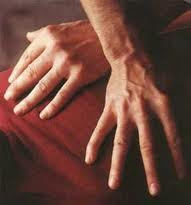
This is my latest article in the Citizen:
Every so often I come across someone who says, “Chiropractic didn’t work for me.” I wonder if that person tried to use a hamster cage as a fish bowl.
I have a sign posted in my office that says I sell hamster cages but I can’t make them work like fish bowls. This is a humorous way to convey that assumptions about chiropractic need to be corrected so a person isn’t disappointed by unmet expectations.
The truth is chiropractic doesn’t work at all. Chiropractic is applied to the body, but it is the body that works. Under appropriate conditions the body works at healing. Saying chiropractic didn’t work is code for “I didn’t get the results I wanted.”
In the past I’ve tried to iron clothing over a light bulb. (Remember the round ones, not the newer spiral kind.) I read in a magazine that a light bulb can be used when there is no time to drag out the ironing board and iron. It doesn’t do a good job. Ironing and healing have this in common: there are no shortcuts.
When in pain, people want to be rid of it quickly. I empathize. It’s human nature. I know many folks who watched their friends get fast relief from chiropractic. When it was their turn they did not have the same results.
Chiropractic works like jumper cables giving the body a boost. Instead of attaching cables to battery terminals, a chiropractor applies his hands to the spine. If the car or battery needs multiple repairs, the jump is futile.
The nervous system and the body are analogous to the battery and the car. The good news is the body heals. Cars just end up in the junk yard. There are many ways we can make chiropractic care more impactful so healing is optimized.
When an injury occurs, time is always a requirement. Some people need less time. For others it may take longer to heal because of underlying reasons such as nutritional deficiencies affecting organ systems, inadequate rest, and older spinal misalignments that slow down nerve transmission.
There are times when someone feels worse after a chiropractic adjustment. This is usually due to tight muscles that are toxic from drugs, inadequate diet, and poor postural habits. Chiropractors provide nutritional and lifestyle guidance throughout care to assist the healing process and prevent future injuries.
Chiropractic adjustments work by sending signals to the brain so it releases neurotransmitters for relaxation and initiating the body’s repair activity. Accumulated effects of old injuries and other stresses can stall the body’s healing response.
When someone says chiropractic didn’t work, it is not time to give up but time to investigate what else is getting in the way of healing. Chiropractic can help a person realize other health concerns need addressing.
The fish bowl analogy is a reminder that pain relief is not the first goal. Chiropractic teaches us how to work through pain in a way that is strengthening rather than weakening.
I have a sign posted in my office that says I sell hamster cages but I can’t make them work like fish bowls. This is a humorous way to convey that assumptions about chiropractic need to be corrected so a person isn’t disappointed by unmet expectations.
The truth is chiropractic doesn’t work at all. Chiropractic is applied to the body, but it is the body that works. Under appropriate conditions the body works at healing. Saying chiropractic didn’t work is code for “I didn’t get the results I wanted.”
In the past I’ve tried to iron clothing over a light bulb. (Remember the round ones, not the newer spiral kind.) I read in a magazine that a light bulb can be used when there is no time to drag out the ironing board and iron. It doesn’t do a good job. Ironing and healing have this in common: there are no shortcuts.
When in pain, people want to be rid of it quickly. I empathize. It’s human nature. I know many folks who watched their friends get fast relief from chiropractic. When it was their turn they did not have the same results.
Chiropractic works like jumper cables giving the body a boost. Instead of attaching cables to battery terminals, a chiropractor applies his hands to the spine. If the car or battery needs multiple repairs, the jump is futile.
The nervous system and the body are analogous to the battery and the car. The good news is the body heals. Cars just end up in the junk yard. There are many ways we can make chiropractic care more impactful so healing is optimized.
When an injury occurs, time is always a requirement. Some people need less time. For others it may take longer to heal because of underlying reasons such as nutritional deficiencies affecting organ systems, inadequate rest, and older spinal misalignments that slow down nerve transmission.
There are times when someone feels worse after a chiropractic adjustment. This is usually due to tight muscles that are toxic from drugs, inadequate diet, and poor postural habits. Chiropractors provide nutritional and lifestyle guidance throughout care to assist the healing process and prevent future injuries.
Chiropractic adjustments work by sending signals to the brain so it releases neurotransmitters for relaxation and initiating the body’s repair activity. Accumulated effects of old injuries and other stresses can stall the body’s healing response.
When someone says chiropractic didn’t work, it is not time to give up but time to investigate what else is getting in the way of healing. Chiropractic can help a person realize other health concerns need addressing.
The fish bowl analogy is a reminder that pain relief is not the first goal. Chiropractic teaches us how to work through pain in a way that is strengthening rather than weakening.
-------------------
--See you at the table...the chiropractic table.
--Dr. Lisa
Your Health Freedom Advocate
----------------



No comments:
Post a Comment